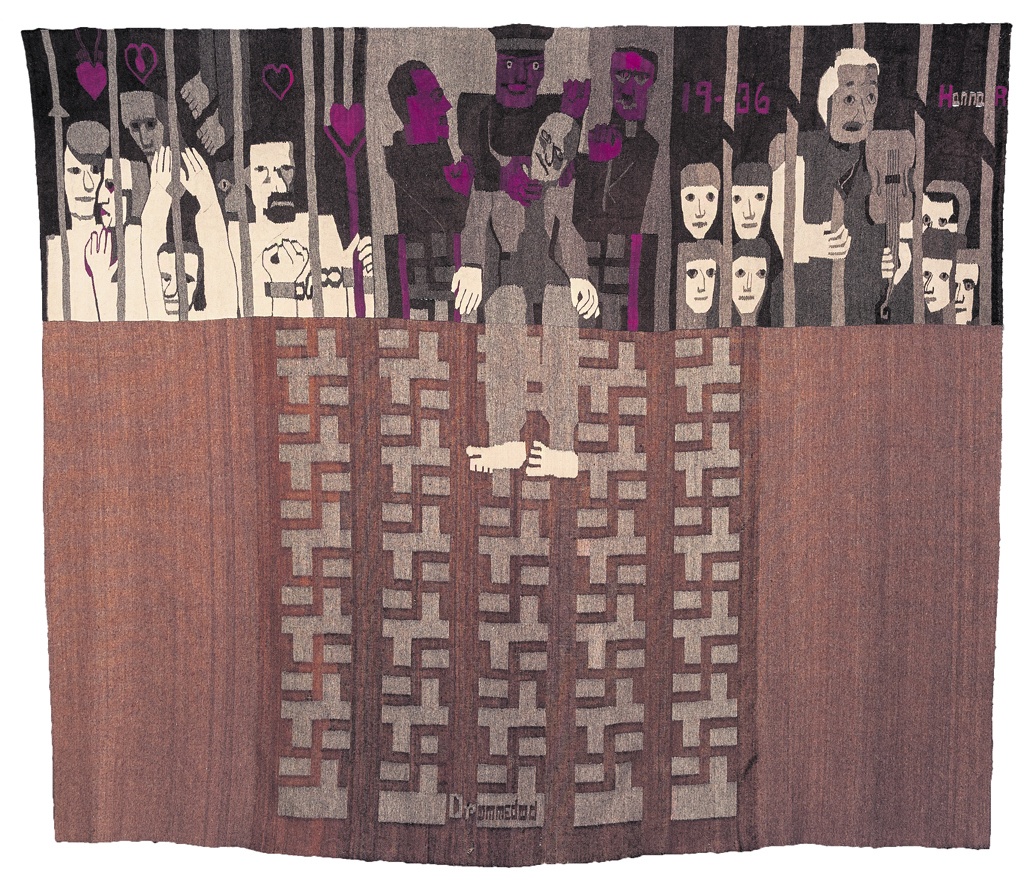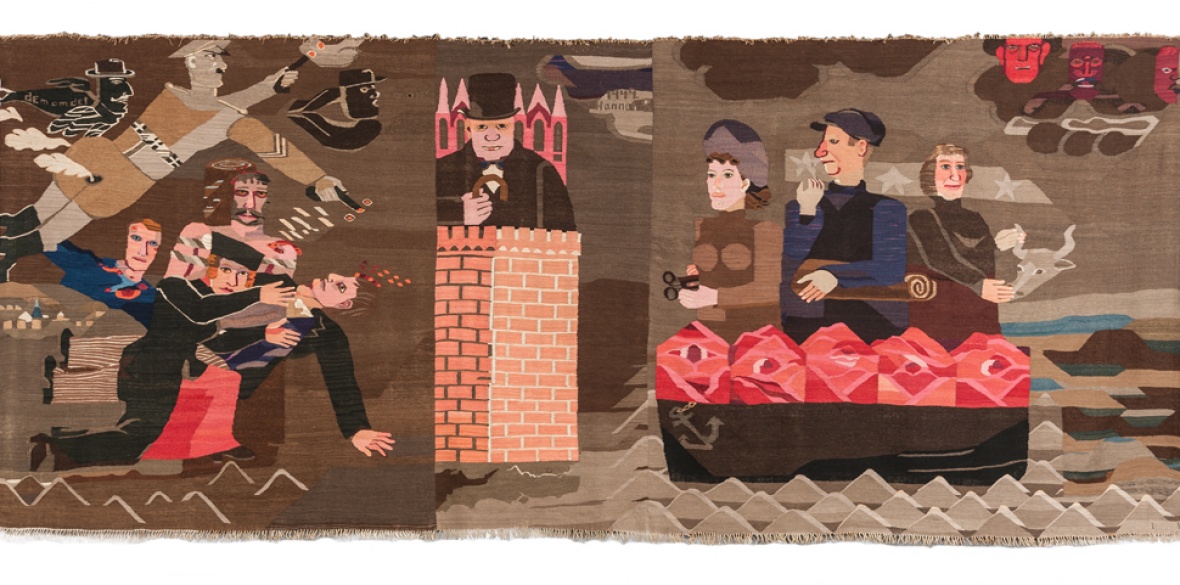This is the last article you can read this month
You can read more article this month
You can read more articles this month
Sorry your limit is up for this month
Reset on:
Please help support the Morning Star by subscribing here
Hannah Ryggen: Woven Histories
Modern Art Oxford
BECAUSE she dared to challenge the entrenched categorisation of “high” and “low” art, the artist Hannah Ryggen (1894-1970) is little known outside Scandinavia.
By marrying the folk craft of weaving with the sociopolitical content of history painting — the pinnacle of the high art hierarchy — she so confounded critical assumptions that she was easily ignored.
Born in the Swedish city of Malmo to a cook and ex-sailor/labourer, Ryggen never lost her working-class consciousness. Aged 19, she became a school teacher and it was then that a friend, the school cleaner, introduced her to the pleasures of the folk art of weaving. At the same time, Ryggen studied art at night school where she learned academic principles and techniques.
In 1922, in a life-changing study trip to Dresden in Germany, she encountered current politicised aesthetic debates and met her future husband, Norwegian artist Hans Ryggen.
They married in 1924 and moved to his remote Norwegian smallholding near Trondheim where they worked as artists and survived as subsistence farmers. But, as an active Communist, Ryggen remained well informed about world events. “Even as a child I was a red revolutionary,” she remarked.
She fully mastered the craft of weaving by 1933 and she put it at the service of peace and social justice until she died. Her tapestries condemned the insecurities and hardships of the Great Depression, the oppression and cruelties of Mussolini’s, Franco’s and Hitler’s fascism, Nato’s anti-communist atomic arms race and the US devastation of Vietnam.
Others shared Ryggen’s Marxist belief in artistic social responsibility, but she was unusual in coupling it with her strong belief in the importance of manual labour. Posing the question: “What should people use their hands for?” she replied: “For doing good.”
Woven directly, and without preparatory drawings, her tapestries evolved intuitively like paintings. Informed by modernist styles, they were also conditioned by the craft’s own discipline. The horizontals and verticals of warp and weft underpin the compositions and the geometric patterns — shapes are simplified, spatial illusion is shallow and figures face frontally.
Ryggen’s refusal to use commercial yarns dictated her limited palette. She carded and spun her own wool from local sheep and made her own dyes from local barks, lichens, plants and even human urine.

She used colour and form expressively, with enlarged hands gesturing like mime artists in arrested motion. Death of Dreams (1936), prompted by the nazi’s imprisonment of the German pacifist Carl von Ossietzky, contrasts the purity of the pallid and hollow-eyed prisoners’ heads and hands with the sinister, ox-blood ugliness of those of their torturers. The sombre mood is indicated by the dominant greys and browns.
References to medieval art’s iconography and sequential events widened Ryggen’s narratives, allowing for layered meanings to topical subjects. The ironically titled Freedom (1941) depicts the executed trade unionist Rolf Wicktsrom and the communist lawyer Viggo Hansteen as religious martyrs, dressed in loose medieval robes. One, in raw rose and reds, has Christ-like stigmata on his hands and feet, while the other appears as a pale angel displaying their two heads on a platter to signify their martyrdom.
Not all is doom and gloom. Defiance, retribution or wit underlie the narratives. We and Our Animals (1934) bursts with gay colour as picture-book farmyard animals mingle with the family at their meal.
Grini (1945) depicts Ryggen’s husband at his easel in the nazi prison camp where he was incarcerated.
Yet all is hopeful golds, creams, crimsons and pinks and their daughter’s apparition, riding a farm horse comforts him. He gets his revenge on the nazis, who forced him paint their portraits, by painting a skull and cross bones instead.
Ryggen evaded the self-righteousness and rigid didacticism which plagued some political art by approaching major issues with humour, poetic fantasy and heartfelt warmth. She kept a link with the grounded folk tapestries and manual labour of her working class heritage, while modernist aesthetics freed her to communicate emotions and ideas expressively so that our initial responses are visceral but then deepened by the political and moral issues raised by their subjects.
That the tapestries still affect us and remain relevant despite our lack of specific knowledge of many of the people and events of the time depicted is because the underlying messages of resistance, solidarity and principled opposition to cruelty, celebrate universal human values.
But the tapestries also act as tributes to political martyrs and warnings, condemnations and calls to resist the bigotry, racism and fascist oppression which sadly continue to plague our planet.
The helpful wall texts and captions at Modern Art Oxford give refreshingly unprejudiced and clear accounts of the persons and events portrayed, so deepening our understanding of the works.
And the exhibition is free, which I feel sure would have pleased Ryggen.
Highly recommended.
Hannah Ryggen: Woven Histories runs until February 18 at Modern Art Oxford, opening times: modernartoxford.org.uk
.











